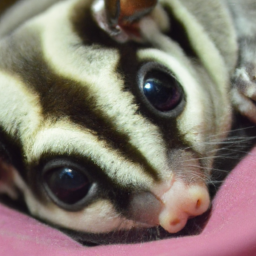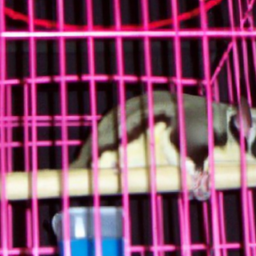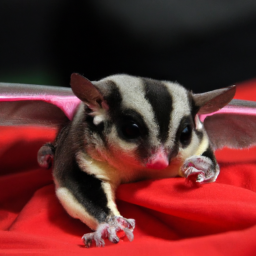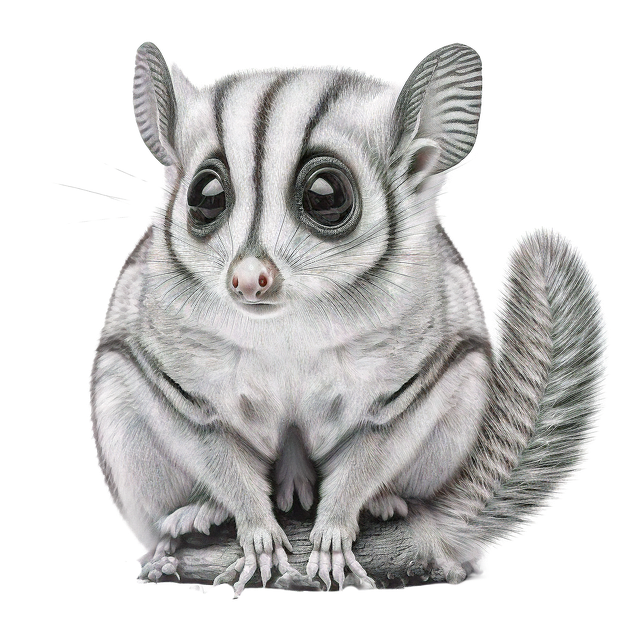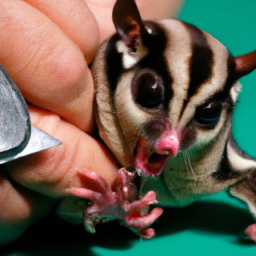Can A Sugar Glider Die From Loneliness
In this article, you will learn about the possibility of a sugar glider dying from loneliness. It’s important to understand the social nature of these adorable creatures, as they thrive when they have a companion or live in a group. Sugar gliders are highly social animals and require social interaction and stimulation to stay healthy and happy.
Loneliness can have detrimental effects on a sugar glider’s well-being. Without a companion or social interaction, they may become depressed, stressed, and even develop behavioral issues. If a sugar glider is left alone for extended periods, they may experience a decline in their physical health and could potentially die from the effects of loneliness. Therefore, it is crucial to provide these little creatures with the companionship and social environment they need to thrive.
Can A Sugar Glider Die From Loneliness
Loneliness is a universal experience that can affect both humans and animals. While we often associate loneliness with humans, it is important to recognize that animals also experience this emotion, including sugar gliders. Sugar gliders are social animals that thrive on companionship and interaction. When deprived of social interaction, they can suffer from a range of behavioral, physical, and reproductive issues. In extreme cases, prolonged loneliness can even lead to the death of a sugar glider.
The Social Nature of Sugar Gliders
Sugar gliders are highly social creatures that naturally live in small groups called colonies. In the wild, they engage in activities such as grooming, huddling together for warmth, and playing. These activities not only promote bonding among group members but also provide companionship and a sense of security. Without the presence of fellow sugar gliders, they may become distressed and exhibit signs of loneliness.
The Effects of Loneliness on Sugar Gliders
Changes in Behavior
When sugar gliders experience loneliness, their behavior can undergo significant changes. They may become withdrawn, lethargic, and show a lack of interest in their surroundings. In some cases, they may even self-harm by excessively grooming or biting themselves. These behavioral changes are indications of their distress and longing for social interaction.
Physical Manifestations of Loneliness
Loneliness in sugar gliders can also manifest in physical ways. A lonely glider may experience a weakened immune system, making them more susceptible to illnesses and infections. They may also lose their appetite, resulting in weight loss and overall poor health. Additionally, their fur may become dull and unkempt due to a lack of grooming, which is a social behavior they engage in when surrounded by companions.
Reproduction and Bonding
The Role of Bonding in Sugar Gliders
Bonding is a crucial aspect of a sugar glider’s life. In the wild, these animals form strong bonds with their colony members, often consisting of lifelong partnerships. Bonding helps sugar gliders establish hierarchy within the group and contributes to their overall well-being. Strong bonds also facilitate successful breeding and the rearing of young.
Impact of Loneliness on Reproduction
Lonely sugar gliders can experience difficulties with reproduction due to the stress and anxiety brought on by their isolation. They may have trouble finding suitable mates, leading to unsuccessful breeding attempts. Even if they do manage to reproduce, the absence of a social support system can negatively impact their ability to rear offspring successfully. This not only affects the gliders themselves but also contributes to declining populations in captive environments.
Stress and Health Issues
Loneliness as a Source of Stress
Loneliness is a significant source of stress for sugar gliders. These animals thrive in environments where they have constant social stimulation and companionship. When deprived of these vital interactions, they experience increased levels of stress, which can have severe consequences for their overall health and well-being.
Potential Health Problems Associated with Loneliness
Prolonged loneliness in sugar gliders can lead to various health problems. Apart from weakened immune systems, they may develop disorders such as depression and anxiety. Skin issues, gastrointestinal problems, and a compromised reproductive system are also common among lonely gliders. These health issues not only impact the glider’s quality of life but can also contribute to their premature death.
Mitigating Loneliness
Importance of Providing a Social Environment
To ensure the well-being of sugar gliders, it is imperative to provide them with a social environment that mirrors their natural habitat. This means keeping them in pairs or small groups to encourage social interaction and companionship. It is recommended to house a pair of sugar gliders together, preferably a male and a female, or two females if they have been raised together since a young age.
Providing Companionship for Sugar Gliders
If a sugar glider is housed alone due to unavoidable circumstances, such as the loss of a companion, efforts should be made to provide them with a substitute for companionship. This can be achieved by spending dedicated time with the glider, offering interactive toys and activities, and even considering the adoption of another sugar glider to serve as a new companion.
The Importance of Interaction
Benefits of Regular Interactions
Regular interaction with sugar gliders not only helps prevent loneliness but also contributes to their overall well-being. Engaging in playtime and bonding activities, such as gentle handling and supervised exploration outside of the enclosure, can help build trust and strengthen the human-gliding bond. These interactions provide mental stimulation and a sense of security for the glider, reducing their risk of loneliness.
Enriching the Social Environment
In addition to human interaction, creating an enriched social environment within their enclosure can also help combat loneliness. This can include providing climbing structures, tunnels, and nest boxes for gliders to engage in natural behaviors. Installing a mirror may also provide the illusion of a companion, although it should not be considered a substitute for proper socialization.
Common Misconceptions
Misconception 1: Sugar Gliders are Solitary Animals
Contrary to popular belief, sugar gliders are not solitary animals. They are highly social creatures that rely on the presence of their fellow gliders for emotional well-being. Keeping a sugar glider in isolation goes against its natural instincts and can have severe consequences for its health.
Misconception 2: Human Interaction is Sufficient
While human interaction is beneficial for sugar gliders, it cannot fully replace the need for social interaction with their own species. Sugar gliders require the camaraderie, physical contact, and communication that only other gliders can provide. Human companionship should never be considered a substitute or permanent solution for loneliness.
Recognizing Loneliness
Observing Behavioral Cues
As sugar glider owners, it is crucial to be aware of the signs of loneliness in our pets. Some behavioral cues to watch out for include increased lethargy, loss of appetite, excessive self-grooming or self-harm, and a lack of interest in their surroundings. If a sugar glider’s behavior deviates from their normal patterns, it may be an indication that they are suffering from loneliness.
Seeking Veterinary Advice
If you suspect that your sugar glider is lonely, it is important to consult with a veterinarian experienced in sugar glider care. They can help assess the glider’s emotional state and provide guidance on potential solutions to mitigate loneliness. A qualified veterinarian can also address any underlying health issues that may be exacerbating the glider’s loneliness.
Can a Sugar Glider’s Loneliness Lead to Barking?
Yes, sugar glider barking behavior can be a result of loneliness. Sugar gliders are social animals and need companionship to thrive. When they feel lonely or isolated, they may exhibit barking behavior as a way to communicate their distress. It’s important for sugar gliders to have social interaction to prevent this behavior.
Will Leashing a Sugar Glider Help Prevent Loneliness?
Leashing a sugar glider can provide companionship, but it may not fully prevent loneliness. While the bond with a pet can be comforting, human interaction is vital for emotional well-being. It’s important to establish a balance between animal companionship and meaningful human connections for a fulfilling life.
Conclusion
Loneliness can have dire consequences for sugar gliders, significantly impacting their physical and emotional well-being. Sugar gliders require social interaction and companionship to thrive and prevent the onset of loneliness-related health issues. By understanding the profound impact of loneliness on sugar gliders and taking proactive measures to provide a stimulating and social environment, we can ensure the happiness and longevity of these fascinating creatures. Let us prioritize their well-being and make efforts to alleviate their loneliness to promote a healthier sugar glider population.
